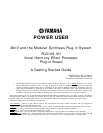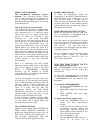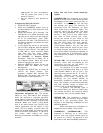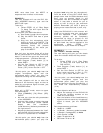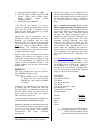
appropriate for your microphone.
This will place your voice in the
center of the mix.
• Set any effects or pan position to
taste.
3>Applying the PLG 100-VH:
• Press the [EDIT] button.
• Press the [COMMON] button next to
the Data Wheel to enter Common level
parameters
• Press [F6] Effects/ [SF1] Connect. The
PLG100-VH is an effect processor and
logically this is where you will program
all of its parameters. (Your PLG1
button will not work. The PLG100-VH is
an effect processor and does not have
Voices, per se).
• In the upper left corner of the screen
you will see a diagram with two signals
coming in from the left. The upper one
is VCE INS or Voice Insertion Effect
(the Part with the Insert Effects
active). The lower one is reserved for
the PLG-EFF or Plug-In Effect
Processor. That’s us! It reads “off’ in
the diagram below. Move the cursor
down to highlight the word “off”.
• Use the [DEC/NO] button to set the
EFFECT PART as “PART A/D” (your
Microphone)
• Highlight the PLG-EF box to view the
various VH board modes: Thru
(bypass), Vocoder HM, Chordal HM,
Detune HM, Chromatic HM. Use the
Data Wheel to make selections.
Important navigation tip: The screen
above is very informative and changes
when you activate or highlight particular
areas. Notice in the screen shot above both
F6 (Effect) and SF1 (Connect) are currently
selected. When you install a PLG board
that is an effect board, the “PLG-EF” box
(which represents the VH board in this
case), SF2 will display a button that will
allow you to drop down and see the native
PLUG IN EFFECT parameters. To return to
this screen while editing the Vocal
Harmony parameters remember to hit SF1
Connect.
What Are the Four Vocal Harmony
Types?
VOCODER HM: This produces up to three
synth voice harmony notes whose pitches
correspond to the exact notes you play on
the MOTIF. In other words, you can sing
the melody and "play" the harmony or
harmonies from the keyboard (or have
them follow from a sequencer track). The
Harmony sound can be edited. The Lead
voice can be synthesized, as well (Pitch
Correct = ON). This is very useful when
you want to Pitch Correct your voice,
forcing the sound of your voice to the
notes you play on the keyboard. You can
edit this synth lead voice from 'almost'
natural to robot-like to munchkin-like
(Lead Gender Depth). You can use your
mouth shape and the sound of your voice
to create unusual and bizarre out-of-this-
world vocal effects. Changing the gender of
the Voice uses one of the harmony voices
and reduces the number of synth backing
voices to 2.
Chordal HM: This produces up to three
harmony notes that correspond to the
chord-type you play on the MOTIF (or
chords recorded to a sequencer).
For example, if you play a C major
triad on the keyboard and sing a ‘C’ note
(and Chordal Mode is set to “trio”), the
resulting harmonies will be ‘C’, ‘E’, and ‘G’.
Thirty-four different chord types are
recognized in this mode - giving you an
amazingly full and flexible palette of
harmonies, suitable for nearly any music
style. The number of harmonies produced
and their position above or below the
melody is set in the Mode parameter.
In general, the Chordal Type is
best suited when you want to simply play
the chords and have the Harmony effect
automatically sort out the suitable notes.
DETUNE HM: This produces a slightly
“detuned” pitch and mixes it with the input
signal for a rich, chorusing effect. The
amount of the detuning is editable via the
MODE parameter.
MIDI note data from a keyboard or
sequencer has no effect in this mode.
CHROMATIC (CHROMAT.HM): This
produces a harmony at a fixed pitch
interval from the original sound (such as
an octave, or a third). The amount of the
pitch shift is set with the MODE parameter.



